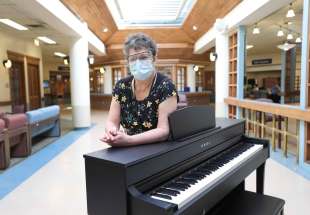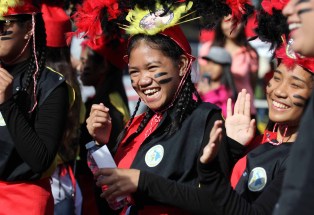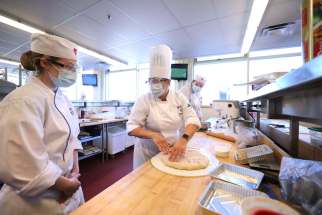À la carte learning Students, instructors in culinary and hospitality programs aren't following the set menu in pandemic-altered landscape
Read this article for free:
or
Already have an account? Log in here »
To continue reading, please subscribe:
Monthly Digital Subscription
$19 $0 for the first 4 weeks*
- Enjoy unlimited reading on winnipegfreepress.com
- Read the E-Edition, our digital replica newspaper
- Access News Break, our award-winning app
- Play interactive puzzles
*No charge for 4 weeks then billed as $19 every four weeks (new subscribers and qualified returning subscribers only). Cancel anytime.
Read unlimited articles for free today:
or
Already have an account? Log in here »
Hey there, time traveller!
This article was published 08/04/2021 (1311 days ago), so information in it may no longer be current.
It’s just before noon and the sunlit kitchen floating high above the Exchange District is a flurry of white coats and lettuce leaves.
Today, first-year students in Red River College’s culinary arts program are working in the garde manger, or cold kitchen, learning how to prep and assemble salads in plastic takeout containers destined for the school’s public food court two floors below.
The lab is running at half-capacity and the student uniforms — white coat, apron and toque, the iconic pleated chef’s hat — have been augmented with blue face masks and safety glasses; just a few of the more noticeable changes to hospitality training amid the pandemic.
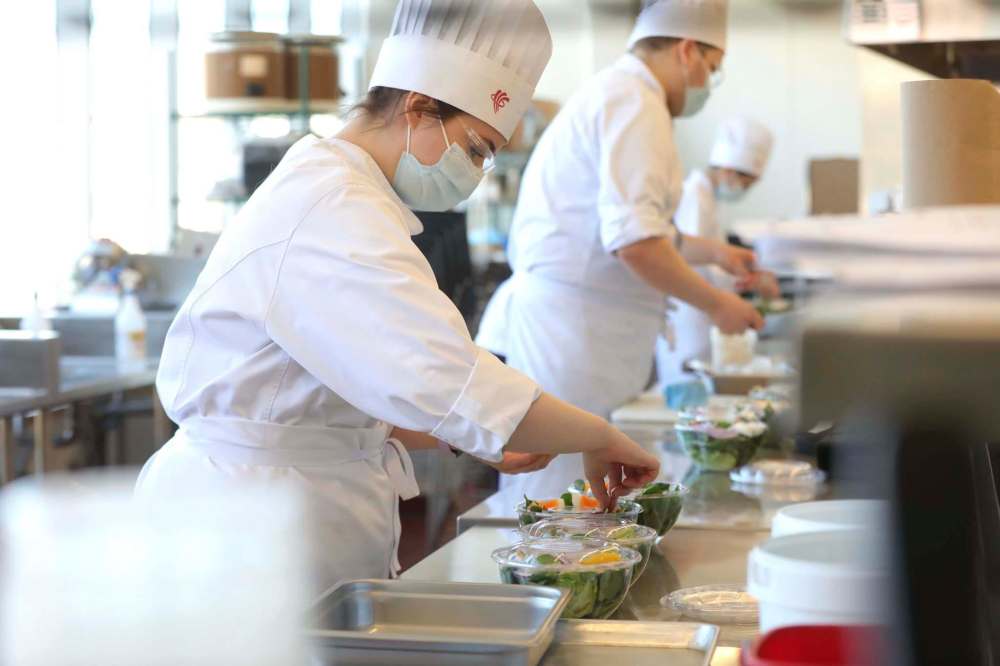
There are 206 students enrolled in Red River’s culinary arts, professional baking, and hospitality and tourism-management programs. They are 206 students who will soon be seeking work in an industry that, at the moment, feels pretty inhospitable.
The coronavirus pandemic has halted tourism, emptied hotels and turned dine-in restaurants into glorified takeout counters. Despite the bleak job prospects, the attitude inside the towering Main Street campus is surprisingly optimistic.
“It is a little troubling,” first-year culinary student Jackson Loepp says of the future. “But I think the food industry will never go away. No matter what happens, people will always need to be fed and have food made for them.”
Loepp has had a lifelong interest in cooking. He applied to Red River a few months before the pandemic hit and, even though he didn’t know if classes would be online or in-person, he decided to follow through when his acceptance letter arrived in the mail.
In an ideal world, Loepp would be heading across the world to cook in Japan post-graduation. In a less-than-ideal reality, his sights are set closer to home.
“There are jobs out there,” he says. “Whether it be in a restaurant, a catering business or someone who works in an old folks home.”

Last March, Red River abruptly closed its campuses and moved classes online — a difficult task when the majority of curriculum is designed for hands-on education — in response to the virus. Hospitality and culinary arts students focused on the theory portion of their studies until learning labs reopened in August.
Administrators have revamped the schedule to make up for lost time and to align with public health protocol. Theory is still taught virtually and evening labs have been added to allow for reduced class sizes.
“That has doubled our resource requirements and doubled the amount of instructors that have had to be working,” says Karen McDonald, chair of the School of Hospitality and Culinary Arts. “We have some term instructors helping us out to fulfil that.”
Norm Pastorin — former head chef of The Grove, Cornerstone and co-owner of Black Bird Brasserie — is one such term instructor. A Red River alumnus himself, Pastorin has enjoyed the opportunity to mentor up-and-coming cooks.

“I found a particular strength in mentoring my staff, so it was a natural progression,” he says during a break from teaching in the garde manger.
He’s also excited about the energy he sees among students, “A lot of chefs in the industry, they struggled with adapting (to pandemic restrictions) and now this is just normal for (the students), so they have more opportunity to create a new set of standards in hospitality.”
Down the hall, there is a sweet, yeasty smell wafting from the professional baking and pastry lab. It’s the week before Easter and students in the year-long certificate program are learning how to make hot cross buns in large industrial ovens.
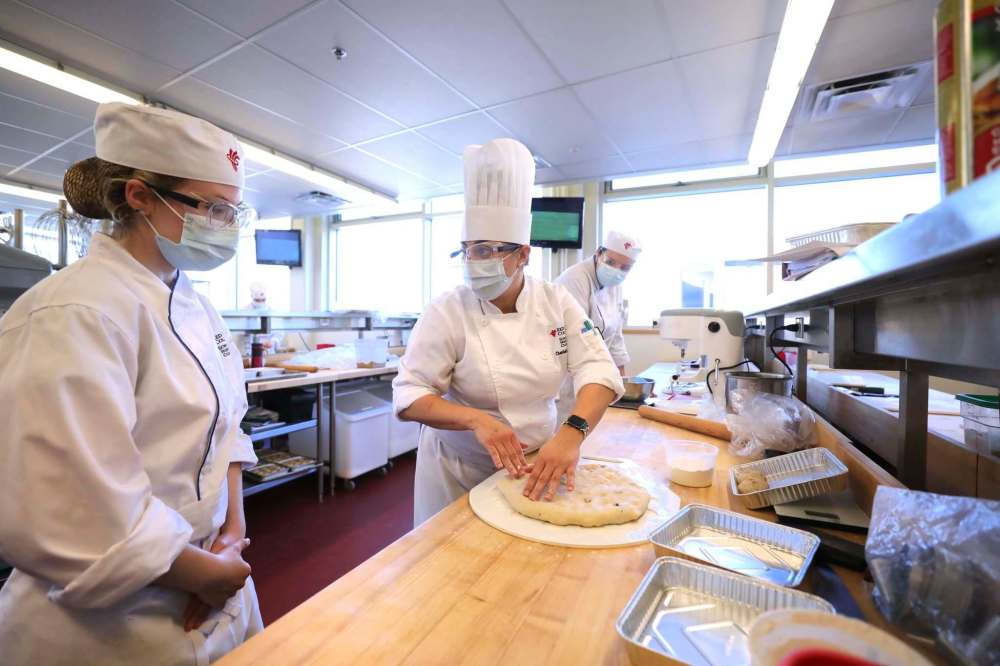
Instructor Chantalle Noschese has been teaching at the college for 10 years; this semester has taken some getting used to.
“It has its pros and cons,” Noschese says, her safety glasses fogging up as she speaks. “The students, they get more of my attention, but I have noticed a kind of decline in energy because there’s less students in the classroom.”
Danielle Petrie is one of seven students in the morning cohort and is grateful for the extra room.
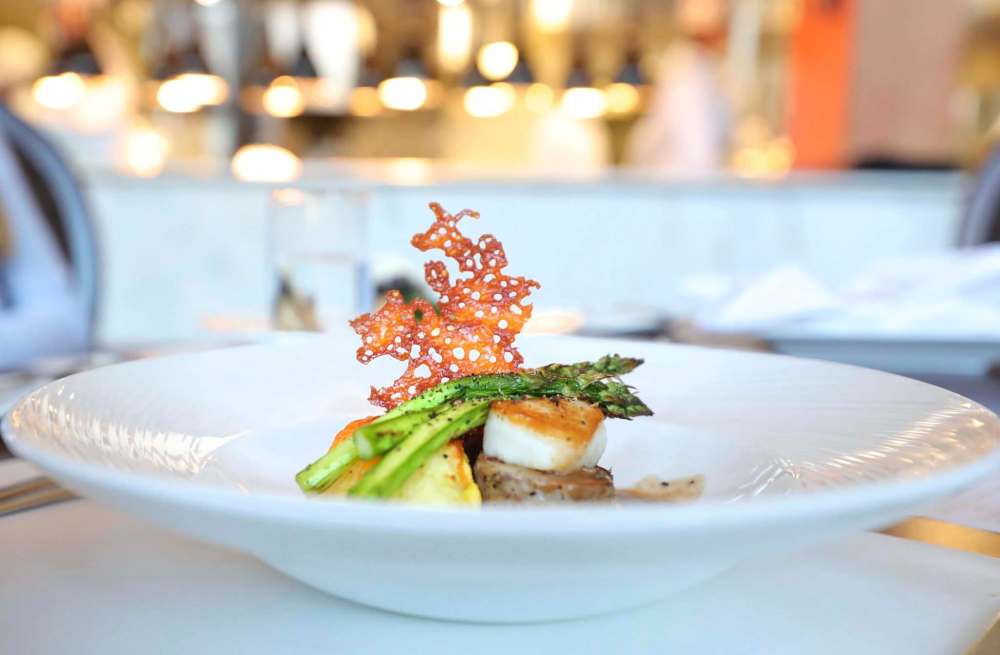
“I can’t imagine being in here with 20 people,” Petrie says. Taste-testing is the only part of her education that’s been encumbered by pandemic protocols. “You’re six feet apart and you can have one bite and it’s like, ‘OK, now I have to go wash my hands… and put the mask (back on).’ It’s not the most convenient thing.”
Most Red River diplomas include some form of on-the-job training. While the culinary arts and hospitality programs have struggled to find enough co-op placements for students in local restaurants and hotels, the baking program has had no shortage of work opportunities — bakeries have been busier than ever.
“If last year proved anything, it’s that bakeries are here to stay,” Noschese says. “People still wanted bread… despite everyone’s attempt to make their own sourdough.”
Downstairs in the ornate, high-ceiling dining room of Jane’s restaurant, hospitality and second-year culinary arts students are in the middle of lunch service. The restaurant is a training facility in which instructors oversee the operation while students cook and serve meals to real-life customers.

Today’s lunch special is pork tenderloin with scallops, roasted corn purée and grilled asparagus. There are only two reservations on the books, which gives Marco Ilas ample time to step away from the heat of the kitchen to talk about his goals for the future. He’ll be graduating soon and is well aware of the current state of the restaurant industry.
“It’s going to be tight, that’s for sure, but cooks are always in line for jobs,” Ilas says, adding that one day he’d like to run his own food truck. “If you start your own (business) or dream big and pursue it hard as you can, I believe you can do anything.”
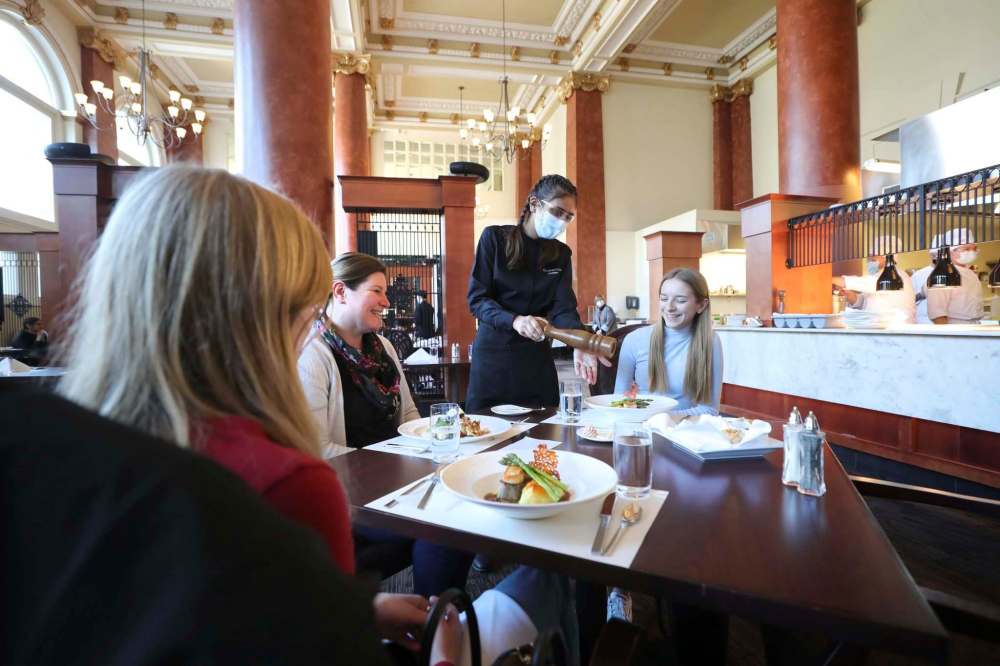
Like all restaurants in Manitoba, Jane’s was closed for in-person dining during code red, so the school had to rely on simulated meal service, with students playing the role of both staff and guests.
“They don’t get that interpersonal workout when dealing with real customers,” says instructor Jean-Marc Blanc of the ways the role-playing falls short. “And also the sense of urgency of being busy — normally in a regular season, each server would have maybe two or three tables, so they have to multitask — those skills are really important.”
Jane’s reopened for lunch and dinner in February and so far business has been slow.
During lunch, hospitality students dressed in all black buzz around the perimeter of the dining room, waiting anxiously for the chance to clear plates and refill water glasses. Kendra Mackey is stationed at the host stand, watching for an unexpected customer to walk in the door. The hospitality program is more theory than lab and this is the first time she’s been in the same room as her classmates.
“Online courses are a lot harder,” Mackey says, adding that she has two kids at home and once had a fire break out during an online lesson. “No matter how well you prepare, you can’t turn off home.”
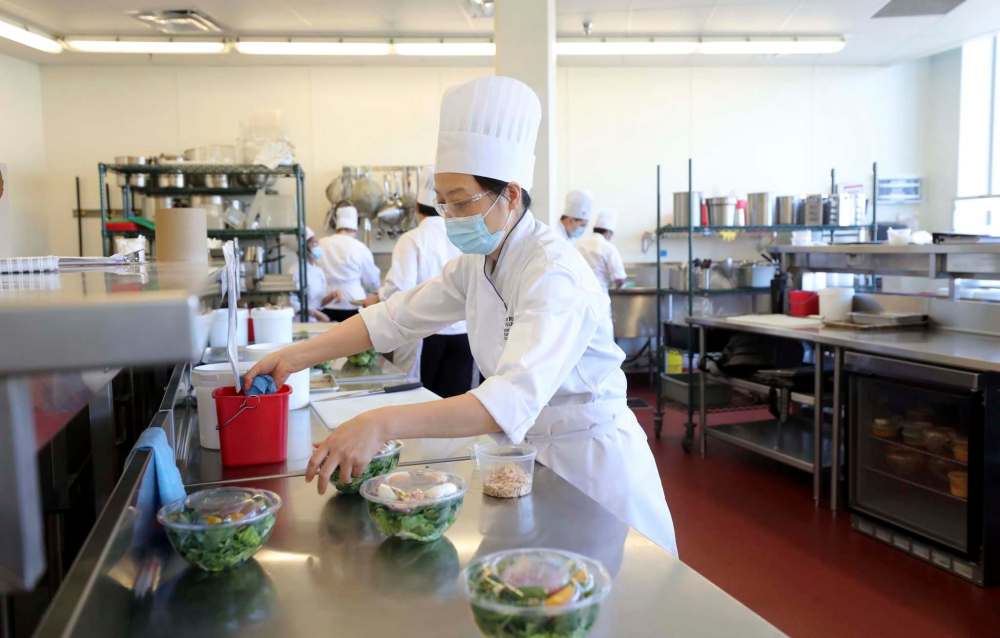
Mackey is from the Bahamas and has worked in hotel management for 20 years. She’s attending Red River to add an “official document” to her resumé and is confident the tourism and hospitality industry will rebound post-pandemic.
“When people are able to travel again and when they’re able to go out and dine regularly it’s gonna be a burst, “ she says. “Once the floodgates are open, it’s gonna be a flood.”
eva.wasney@freepress.mb.ca
Twitter: @evawasney


Ruth Bonneville
Photojournalist
As the first female photographer hired by the Winnipeg Free Press, Ruth has been an inspiration and a mentor to other women in the male-dominated field of photojournalism for over two decades.
Our newsroom depends on a growing audience of readers to power our journalism. If you are not a paid reader, please consider becoming a subscriber.
Our newsroom depends on its audience of readers to power our journalism. Thank you for your support.
History
Updated on Monday, April 12, 2021 1:32 PM CDT: Updates reference to Norm Pastorin.




